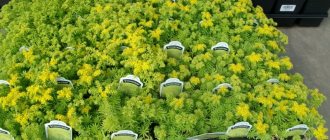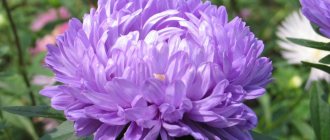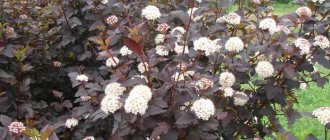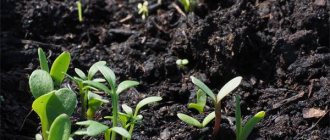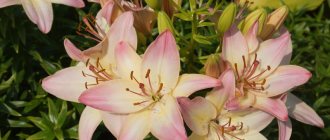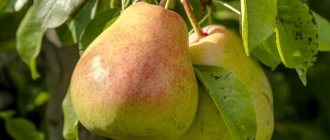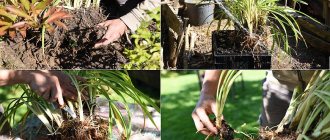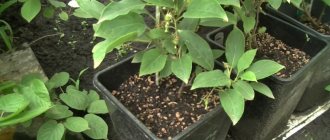- What are ITO peonies and how to grow them
- Ito peonies: yellow peonies with a special status
- History of selection of yellow peonies
- Attempts to achieve a yellow color by crossing herbaceous peonies
- Selection of Ito-peonies
- Acquisition of rights to hybrids and the beginning of the American history of peonies
- The best varieties of Ito hybrids
- Brief description of the most popular ITO peonies
- Features of growing it peonies
- Agricultural technology for growing ITO peonies
- Video: ito peonies - advantages, varieties, planting and care
Among the favorite herbaceous peonies, the yellow-flowered varieties have remained the most desirable, rare and valuable for half a century. A special category of interspecific hybrids, obtained from crossing herbaceous and tree-like peonies, is much closer in “behavior” to herbaceous stars. The death of the above-ground parts during the winter does not in the least prevent one from appreciating the originality of these plants. The luxurious shades of large, showy flowers fascinate and attract, and each yellow peony in the garden becomes not only a special star, but also the true pride of the collection.
Tree peony: types and varieties, propagation, planting and care (read more)
What are ITO peonies and how to grow them
ITO peonies are a relatively new group of garden peonies, valued by flower growers around the world for the unique beauty of their flowers, abundant and long-lasting flowering, relative unpretentiousness and high winter hardiness.
ITO peonies have inherited the best qualities of their parent forms.
ITO peonies received their name in honor of the famous Japanese scientist and breeder Toichi Ito, who in the middle of the last century was actively involved in the selection of garden peonies. At that time, many dreamed of creating large-flowered varieties of herbaceous peonies with yellow flowers. Toichi Ito decided to achieve this goal by transferring the outstanding qualities of yellow-flowered tree peonies to herbaceous peonies. The breeder carried out more than 1,200 crosses between herbaceous and tree-like forms of peonies, resulting in several plants with the desired yellow flower color.
Herbaceous peony: varieties and species, propagation, planting and care (read more)
ITO peonies inherited the best qualities of their parent forms:
- very large flowers of original pastel colors;
- abundant and long flowering;
- beautiful dark green foliage;
- powerful herbaceous stems that do not require garter;
- high winter hardiness.
Ito peonies: yellow peonies with a special status
Ito-hybrids , Ito-peonies, or Yellow peonies (international designation - Itoh Hybrid Group, i-hybrids, Itoh hybrids, Itoh group, Intersectional hybrids) - a group or class of hybrid varieties of peonies obtained by crossing the tree peony (Paeonia x suffruticosa ) with milky peony (Paeonia lactiflora, initially with a semi-double form). They have the features of both peonies, but in garden classifications and agricultural technology they are closer to herbaceous ones due to the fact that the above-ground part of the plants dies off in the winter.
A feature of most flowers of ITO hybrids is the presence of contrasting dark red or burgundy spots at the base of the petals, like in the flowers of tree peonies.
Ito hybrids received their name in honor of the scientist who was the first to achieve a stable yellow color of petals through a radically new approach to plant breeding. His work divided the history of peonies into “before” and “after” and became a turning point, expanding the color palette of garden peonies to include shades of yellow.
This is the most prestigious and elite group among garden peonies. Many call the plants the most promising, because the possibilities of hybridization and improvement of characteristics open up completely new horizons in the breeding of new varieties. Despite the fact that crossing herbaceous and tree-like peonies can improve all the characteristics of the variety, including the beauty of foliage, stability, and endurance, such intersectional hybrids have become famous only for one single trait - color.
Ito hybrids are powerful peonies that form large, dense bushes with strong shoots. The root system is spreading, superficial, lignifying with age. The spreading form of the bush, growing more in width than in height, with dense branching and dense foliage allows the plants to look very massive and lush.
Yellow peonies with a special status.
The height of yellow peonies ranges from 50 to 90 cm. The shoots deviate or bend, but rarely lie down under the weight of the inflorescences. The leaves of Ito hybrids are more similar to the foliage of tree peonies. Complex and carved, they create a unique dark green pillow that retains its decorative effect even until severe frosts. The color changes to yellow in autumn only in some varieties.
Ito hybrids bloom on the tops of annual shoots, as do herbaceous peonies. But in terms of beauty, the large inflorescences of these peonies are more reminiscent of their tree-like counterparts. The buds are somewhat reminiscent of chestnut fruits in shape and brown color.
Massive, from 15 to 20 cm in diameter, with an elegant pattern of wavy petals that create a picturesque flower, the inflorescences always allow you to admire the lush center of stamens and staminodes, which seems to be shyly visible in the center. Because the center is visible, Ito peonies are closer to semi-double varieties and are rarely classified as double, although the number of petals exceeds any expectation. There are often spots at the base of the petals. Most varieties cannot boast of an amazing strong aroma.
The color range of Ito hybrids includes not only the usual pink-white-cherry tones, but also the rarest shades of yellow - from bright lemon to melon, sunny golden, cold shade of ripe lime, often with subtle transitions of nuances. In all varieties, flowers are prone to fading: in the sun and as they bloom, the color gradually fades.
ITO hybrids are a truly unique and unusual group of peonies that are attractive to gardeners.
One of the features of Ito hybrids is the general instability of color. Even the same generation of plants may have different shades and color saturation, depending on deviations in growing conditions, age, and quality of care. The same bush in different years may differ in the shape of the crown, the color of the inflorescences, and their size. The same factor made it possible to develop Ito-peonies of the “chameleon” category - changing color several times during flowering.
The flowering period of yellow peonies coincides with the flowering period of mid-late herbaceous peonies. They never bloom in early summer, delighting when most competitors have already left the garden scene. The flowering of Ito peonies lasts up to three weeks, the effect of more abundant flowering is achieved due to the fact that the apical buds bloom gradually, and the lateral ones only follow them, extending the overall period.
Ito peony, variety "Bartzella".
Ito hybrids are excellent cut varieties. Not only do they last longer in water than the flowers of most tree and herbaceous peonies, but unlike flowers left on bushes, the color of cut peonies remains rich and unchanged until they wither.
Description and features
Hybrid peonies or Itoh-hybrids are perennial plants with a branched bush.
The main characteristics of the hybrids repeat the features of the tree peony:
- the bush reaches a height of up to 90 centimeters, the stems deviate to the sides when fully developed;
- leaves tightly adhere to the stems, similar in shape and structure to the leaf blades of tree-like relatives;
- the flowers of the hybrids have central spots and emit a strong odor when blooming.
Flowering of Ito peonies begins depending on the varietal characteristics and lasts up to 3 weeks. Cut flowers retain their original appearance for 2 weeks, taking into account changes in water.
Information! The above-ground part of the perennial changes every year; this distinguishes Ito hybrids from related species.
History of selection of yellow peonies
The history of hybridization of peonies and the development of yellow color in flowers is in itself very fascinating. The incredible shades of pink and milky watercolor of these flowers have won hearts for thousands of years, but in the 20th century, with the development of landscape design, and the industry as a whole, the desire to obtain a peony with an unprecedented yellow color quickly grew into an obsession.
The appearance of yellow peonies did not in any way change the popularity of peonies with much more typical shades, but still became a sensation and added an exclusive, luxurious option to the list of available design options, which is still hunted by both botanical gardens and collectors, as well as private gardeners - true fans of this amazing plant.
The entire history of breeding yellow colors in herbaceous peonies can be divided into three periods.
Attempts to achieve a yellow color by crossing herbaceous peonies
Until 1948, active selection was carried out all over the world and largely unsuccessful attempts to obtain varieties with a yellow color continued without drastic measures. As a result of selection based on the large-leaved peony, Mlokosevich and Vitman, which by nature partially have the yellow flavone pigment, modest varieties were obtained that only had individual yellow details.
During this period, the greatest contribution to the hybridization of peonies was made by Earl White, who obtained the first of the conditionally yellow varieties, “Claire de Lune,” in which the yellow pigment appeared so weakly that it only gave the flower shades of cream and ivory.
Ballerina , White Sands, which are still in great demand today ). White Sands), Cheddar Cheese, Golden Bracelet , Moon , etc.).
Selection of Ito-peonies
The interspecific hybridization of herbaceous and tree peonies by breeder Toichi Ito became a long-awaited breakthrough in peony breeding. Crossing the yellow peony (Paeonia delavayi), the only peony in which the yellow carotenoid pigment was persistent and allowed hybridization without loss of tone, with a herbaceous semi-double peony , resulted in the first ever variety with picturesque yellow flowers.
The official year of the “start” of yellow peonies is considered to be 1948; the full flowering of plants with a unique color took place after the death of the breeder. Until 1967, when the rights to the hybrids were sold, 4 more yellow Ito hybrid varieties bloomed, and today they remain stellar.
Peony Border Charm
The Ito hybrid variety Border Charm was created by American breeder Don Holinsworth in 1984. The translation of the name of the variety is quite romantic: “Border of Charm”. Decorative perennial 50-60 cm tall, spreading. Buds 16 cm in size bloom on strong stems. The flower is semi-double yellow in color with a scarlet area at the base. The leaves are decorative, rugged, dark green, with a blue tint. ITO peony looks great among the lawn, in a bouquet or flower arrangement. The flowering period is late, the smell is weak.
Varietal characteristics are fully revealed 2-3 years after planting. Shows resistance to frost and disease.
Acquisition of rights to hybrids and the beginning of the American history of peonies
The beginning of the history of yellow peonies on the territory of the New York peony nursery of Louis Smirnov with the official registration of varieties under the name Ito-Smirnov marked the period of replenishment of the collection of varieties and the beginning of the modern history of yellow peonies.
Registered in 1974, the four core varieties began to spread throughout the world, and the designation “Ito hybrids” became not only a registered class of peonies by the American peony community, but also a protected trademark. Other American breeders were also actively working to expand the palette of yellow or almost yellow peonies, and for two decades a new name from the Ito hybrid section appeared in catalogs almost every year.
An interesting trend among peonies are ITO hybrids.
Since the late 80s of the last century, the selection of Ito hybrids, as well as peonies in general, cannot boast of positive dynamics. Almost all varieties on the market were bred quite a long time ago, and if new products appear, they are far from impressive in quantity.
The best varieties of Ito hybrids
Today, ito hybrids are a category of peonies with a huge selection of colors and shades, far from being limited to the yellow palette. Of course, the yellow varieties of Ito peonies remain the most sought after and legendary. But, despite the considerable price and status of an exclusive garden decoration, Ito hybrids are increasingly conquering the market for “white-pink-red” peonies.
The best yellow-flowered Ito hybrids include:
Variety “Yellow Heaven” is a watercolor, large and stable peony with very beautiful, densely spaced foliage and bright yellow flowers that gradually fade in the sun. This variety is one of four yellow peonies registered for the first time, distinguished by its buttercup-shaped shape and arrangement of petals.
The variety “Yellow Dream” is one of the first four varieties of yellow peonies, an amazingly spectacular yellow-colored semi-double peony with a soft, mother-of-pearl color, bright spots at the base of the petals and beautiful staminodes. Against the background of dark foliage, large inflorescences glow in the sun, shimmering with soft colors and as if absorbing sunlight.
The variety “Yellow Emperor” is one of the first yellow varieties by Ito, double, with wavy, large petals, a classic flower shape and orange staminodes.
Variety “Yellow Crown” is a charming, picturesque “progenitor” variety with a light yellow, buttery color, emphasized by dark orange stamens in the center of the flower. The petals seem translucent, the leaves are quite light and bright, the plant as a whole looks surprisingly elegant and classic.
Border Charm variety is a light yellow peony with contrasting red-orange spots that seem to create stripes inside the rows of petals. The petals are deeply dissected, becoming smaller towards the center, almost merging with the staminodes.
Ito peony, variety “Yellow Heaven”.
Ito peony, variety “Yellow Emperor”.
Bananas variety with a lemony, light yellow color and streaks of deep red at the base of the petals.
Charm variety is a variety with a unique, muted, creamy yellow color and translucent, often inwardly curled petals with reddish spots, distinguished by a bright flower center with yellow staminodes.
Lemon Dream variety is a unique and very valuable variety with a two-color color, in which double flowers with translucent petals with massive staminodes are distinguished by a contrasting color dividing the flower in half - half pink, half yellow.
Viking Full Moon variety is an amazingly beautiful variety with wide petals overlapping each other in a spiral with a translucent texture, a cherry base and a jagged edge that creates a curly effect.
Sonoma Sun variety is a valuable and rare semi-double variety with a light golden color and a massive center illuminated by orange staminodes.
Memory variety is an amazing creamy-fawn-pink-yellow variety, in which dark pink-brown spots at the base emphasize the watercolor play of shades of the petals. One of the brightest watercolor varieties among garden peonies.
The variety “ Sequestered Sunshine” is a bright yellow, gradually fading peony with a slight pink tint on the outer petals and orange highlighting of the light green stamens.
Garden Treasure variety is a fashionable variety with dark leaves, a delicate buttery yellow uniform color and semi-double neat flowers with orange spots at the base, highlighting the bright yellow staminodes.
Ito peony, Border Charm variety.
Ito peony, Prairie Charm variety.
Canary Brilliants variety is a unique watercolor variety with a combination of fawn and yellow-gold colors, passing from the center to the outer petals in soft halftones and very dark spots at the base of the petals.
Singing in the Rain variety that changes color from pink to orange to golden yellow, with bright yellow anthers on pink stamens. It is considered one of the most fragrant and high meter profusely flowering Ito hybrids.
Variety "Julia Rose" is a unique variety with a fading yellow color. Pink, unevenly colored inflorescences throughout the bush change color to almost light yellow as they bloom. Watercolor repainting transforms bushes into a picturesque wonder. These are slightly fragrant peonies with a deeper pink spot at the base of the petals and very small staminodes.
Lollipop variety of peonies that often produces pink and purple flowers, with a base color of light yellow combined with pink-purple stripes, strokes and spots that give the semi-double flowers a variegated ripple effect.
The Yellow Gem variety is a semi-double peony with almost straight translucent petals and a silky texture, emphasizing the beauty of a delicate watercolor yellow tone.
Ito peony, variety “Lemon Dream”
Ito peony, Yellow Gem variety.
Variety "Bartzella" is a light yellow, double peony with almost spherical flowers, almost straight, uncut petals and orange spots at the base of the inner petals. The diameter of the flowers is up to 20 cm, allowing you to fully appreciate the nuances of color and pleasant aroma.
Variety “Shining Light” – light yellow, with a brighter base of the petals, yellow semi-double variety with a classic flower shape.
Today, not only yellow Ito hybrids are widely represented on the market. Cherry, pink, fuchsia, fawn, bi-color and chameleon (color-changing) varieties with unique shades, labeled Ito peonies, offer a combination of unique textures and shapes.
Ito peony, variety “Pink Ardor”.
Ito peony, variety "Morning Lilac".
Varieties “Pink Ardor” , “Simply Red” , “Copper Kettle” , “Scarlett Heaven” , “Pink Double Dandy” , “First Arrival” , “Morning Lilac” and dozens of others are an excellent frost-resistant and surprisingly lush alternative to the usual herbaceous and tree peonies. These plants, like all Ito peonies, retain, if not surpass, all the practical advantages of the yellow varieties.
Brief description of the most popular ITO peonies
Peony ITO-hybrid Bartzella. ITO is a mid-late flowering peony, winner of the gold medal of the American Peony Society in 2006, the Landscape Merit Award in 2009 and other prestigious awards. The flowers are double, very large, up to 25 cm in diameter, fragrant, lemon-yellow with red strokes at the base of the petals. The height of the bush is 80-90 cm. The flowering is long and very abundant. An adult bush can form up to 60 flowers per season.
Peony ITO-hybrid Garden Treasure. ITO is a medium-late flowering peony, winner of the gold medal of the American Peony Society in 1996, the Landscape Merit Award in 2009 and other prestigious awards. The flowers are semi-double, up to 20 cm in diameter, very fragrant, golden yellow with small scarlet spots at the base of the petals. The height of the bush is 80-90 cm. Flowering is abundant and long-lasting.
Peony ITO-hybrid Julia Rose. ITO peony of medium flowering period. The flowers are semi-double, large, up to 20 cm in diameter, with a light aroma, silky, with a color that changes as the flower blooms from cherry-red to orange-pink and even peach-yellow. The height of the bush is 60-70 cm. Flowering is abundant and long-lasting.
Peony ITO-hybrid Yellow Crown. ITO-peony of medium late flowering period. The flowers are double, medium-sized, up to 17 cm in diameter, with a pleasant aroma, bright yellow with light red flashes at the base of the petals. The height of the bush is 50-60 cm. Flowering is abundant and long-lasting.
Peony ITO-hybrid Canary Brilliants. ITO peony of medium flowering period, winner of the American Society of Peony Lovers Award “For Landscape Merit” in 2010. The flowers are semi-double, large, up to 20 cm in diameter, fragrant, yellow-beige when blooming, later pale yellow. The height of the bush is 70-80 cm. Flowering is abundant and long-lasting.
Peony ITO-hybrid Yellow Crown. ITO peony of medium flowering period. The flowers are double, large, up to 20 cm in diameter, with a light aroma, distinguished by an exquisite combination of red, yellow and orange, which gives the flower a characteristic copper hue. The height of the bush is 60-70 cm. Flowering is abundant and long-lasting.
Peony ITO-hybrid Lollipop. ITO peony of medium flowering period. The flowers are semi-double, large, up to 20 cm in diameter, with a light aroma, light yellow with red-violet stripes along the entire length of the petals. The height of the bush is 70-80 cm. The flowering is long and very abundant due to the formation of a large number of lateral buds.
Peony ITO-hybrid Hillary. ITO peony of medium flowering period, winner of the American Society of Peony Lovers Award “For Landscape Merit” in 2009. The flowers are semi-double, medium in size, up to 17 cm in diameter, bright creamy pink in color. The tips of the petals gradually lighten, and their bases retain rich reddish shades, thereby creating the effect of an internal glow. The height of the bush is 60-70 cm. Flowering is abundant and long-lasting.
Peonies after flowering
Ito hybrids look very impressive even after flowering, thanks to their foliage, which begins to die off only with the onset of sufficiently severe cold weather. At this time, you should start replanting, pruning, and preparing for winter.
Transfer
The root system of Ito peonies is extensive and grows over the years. It is better to replant 4-5 year old plants that have matured and replant them once every next 3-4 years. Replanting is carried out in September, when the plant has bloomed. The upper part of the peony is cut off to the root, and the root itself is cut to a length of 10-15 cm at an angle of 45º and divided into parts. After this, you need to follow the usual landing steps.
Important! Be careful when digging up roots. The bush must be loosened before being pulled out.
Trimming
There is no need to rush to cut off healthy foliage, since the nutrients will reach the roots in the fall. Peduncles, dried and withered leaves are cut off in early September.
At the end of November, the remaining leaves are cut at soil level, while the pruning shears are held parallel to the ground. After pruning, the soil is mulched and sprinkled with ash.
Preparing for winter
Ito peonies, despite their frost resistance, still require special winter shelter. Otherwise, they will be subject to freezing of the buds and rhizomes. To insulate the plant, it is necessary to mulch the soil to a height of at least 10 cm. You can cover the peony with rotted manure, grass and leaves. In persistent cold weather, special shelters can be used.
Features of growing it peonies
Despite the status of luxurious, exclusive and rare varieties, yellow peonies pleasantly surprise with both their endurance and low maintenance requirements. They are grown according to the same principles as ordinary varietal herbaceous peonies.
Ito peonies love fertile, high-quality soils and warm places. They do not tolerate stagnant water or the proximity of not only large bushes and trees, but also buildings. Requires the selection of sunny and wind-free areas with drained soil with a neutral or slightly alkaline reaction.
The optimal planting period for these plants is considered to be the end of summer and the beginning of autumn (from the third ten days of August to October, in emergency cases - until the end of October). Planting holes should be very wide (up to 1 m in diameter) and deep. The soil is improved according to general rules. The buds on the rhizome are placed at a level of 3-4 cm from the ground level (but not deeper than 5 cm); if the buds are unevenly located, the rhizome is tilted. The plant independently regulates the degree of immersion, but the “start” should not be too deep.
Care comes down to abundant watering during drought. Fertilizing begins in the third year, adding nitrogen fertilizers at the beginning of the season, and potassium-phosphorus fertilizers during flowering. Weed removal combined with loosening is a mandatory measure, as for all peonies.
On each stem of ITO peonies, lateral buds are formed, which open gradually, one after another.
Ito-peonies are amazingly resistant to pests and diseases and do not suffer from rust or botrytis. Even yellow peonies overwinter in the same way as herbaceous peonies; they do not require any more complex procedures for preparing for wintering. The stems are pruned to the level of the buds (removing part of the buds formed on the shoots, as in the tree peony), only after severe frosts have affected the bushes (on average, from mid-November). Only bushes that were planted very late need mulching for the winter.
The only significant difference that determines the difficulties of propagation and rejuvenation of peonies with yellow flowers is the need to take into account the accelerated lignification of the root system. These peonies can be divided into strong, well-established sections only at the age of 3-4 years; in the future, the process is not only more traumatic, but may also require sawing the bushes.
If there is no goal to increase the collection, then Ito peonies can be grown as an analogue of tree peonies - the plants are durable and do not like transplants, except in emergency cases. But if desired, Ito peonies are divided with a hacksaw or saw, even at a considerable age. When dividing plants, 2 to 5 renewal buds are left on one division.
Planting and care
A new species of peonies prefers areas exposed to sunlight. Some shading in the middle of the day is allowed. When choosing a location, several important points are taken into account:
- Peonies should not be planted in lowlands where water stagnates after rains and snow melts.
- Loamy soil with a neutral or slightly alkaline reaction is preferred.
- There should be no trees or large bushes nearby; they will take away nutrients from the soil.
The optimal time to add a new bush to the garden is autumn. Planting in spring is not recommended, but if necessary, flowers can be planted in April. The hole for the seedling is prepared in advance. Its size is 70670 cm, depth 50-60 cm. Sand, expanded clay or just broken bricks are poured onto the bottom. These materials play the role of drainage, improving the outflow of water. A cushion of fertile loose soil with mineral fertilizers is prepared under the root.
Mixture components:
- humus or compost;
- garden soil;
- superphosphate – 200 g;
- dolomite flour 200-300 g;
- wood ash – 250-500 g.
Having mixed all the components, fill the hole 2/3 with them. The roots of the flowers will be drawn to the stored nutrients. The seedling is placed in the middle of the hole and covered with earth. It is important to know how to plant an ITO peony correctly. The root buds should be 3-5 cm from the surface. The seedling is watered abundantly.
Care
Hybrid peonies are extremely resistant to freezing temperatures and do not require winter shelter. In cold regions, it is recommended to protect young plantings of the first year with moss or oak leaves. In spring, plants need good watering, fertilizing with mineral fertilizers and loosening the soil. In the first 2 years, fertilizing is carried out foliarly, on the leaves. In total, the soil is fertilized 3 times per season: in early spring, before flowering and at the end of summer. In autumn, the stems are cut off like herbaceous peonies.
Advice. Hybrid peonies are more sensitive to soil acidity levels, so add dolomite flour or wood ash to the soil twice a year.
Hybrids are propagated by dividing the root. An adult plant aged 4-5 years is suitable for cutting. I propagate perennials at the end of August or September. The rhizome is divided into parts of the same size with roots no shorter than 15 cm and 2-3 growth buds. Before planting, the cuttings are treated with a fungicide solution.
Agricultural technology for growing ITO peonies
ITO peonies should be planted in elevated and well-lit areas with low groundwater levels. ITO peonies will feel best on loamy, well-fertilized soils with a high humus content. The acidity of the soil should be slightly alkaline or neutral. The best time for planting ITO peonies is the end of August - beginning of September.
Peony root planted in a pot.
The optimal size of the planting hole is 50-60 cm in depth and 60-80 cm in diameter. “Divisions” of ITO peonies are planted in such a way that they are located strictly in the center of the planting hole and with a slight slope, and the renewal buds are located at a depth of 3-5 cm from the soil surface level. Planting holes are filled with pre-prepared nutrient soil, consisting of a mixture of humus and garden soil with the addition of a small amount of phosphorus fertilizers. To deoxidize, a small amount of ash or dolomite flour should be added to the soil. If you purchase planting material for ITO peonies with a closed root system, you should carefully, without disturbing the earthen ball, transfer the plant from the container into the planting hole, and then, observing the required planting depth, fill the planting hole with nutrient soil. After planting, the soil surface should be mulched to maintain its moisture and breathability.
Peony ITO-hybrid Julia Rose.
Peony ITO-hybrid Bartzella.
Caring for ITO peonies is generally the same as caring for ordinary herbaceous peonies. In summer, plants require regular watering and fertilizing. It is especially important to provide plants with sufficient moisture in late spring - early summer, when active stem growth and bud formation occur, as well as at the end of summer, when plants are actively forming renewal buds. It is best to water ITO peonies in the evening. In hot weather, it is advisable to moisten the soil surface daily. ITO peonies are watered exclusively “at the root”. It is highly not recommended to use the sprinkling method, since in this case the plants are very easily infected with fungal diseases. After each watering, the soil under the peony bushes should be loosened. The more oxygen the roots receive, the more beautiful and magnificent the flowering will be.
If proper agricultural practices are followed, ITO peonies do not require any fertilizing in the first two years after planting. Plants should be fertilized starting from the third year of their cultivation. In spring and early summer (during active growth and budding), plants are fed with nitrogen fertilizers, and at the end of summer (during the formation of renewal buds) - with a phosphorus-potassium complex.
Peony ITO-hybrid Garden Treasure.
Peony ITO-hybrid Yellow Crown.
The buds that appear in the first two years should be removed immediately, since the flowering of young plants can significantly weaken their development. In mature, well-formed plants, the first pruning is done in mid-June. At this time, the “old” dried flowers are removed, which promotes the formation of new renewal buds. The more of them are formed, the more magnificent and beautiful the flowering of ITO peonies will be next year. When performing pruning, it is also important to carefully remove all leaves and petals that have fallen to the ground. This is done to reduce the risk of developing fungal diseases. The second time ITO peonies are pruned in the fall - in the first half of October. This time, almost the entire above-ground part of the plants is removed, after which it is burned to prevent contamination of the plantings with fungal infections. When removing the aboveground part of ITO peonies in autumn, it should be remembered that the main renewal buds, which ensure further development and flowering of plants, are formed on the roots deep in the soil.
Peony ITO-hybrid Canary Brilliants.
Peony ITO-hybrid Lollipop.
ITO peonies are very winter-hardy plants, so they do not require mandatory shelter for the winter. In particularly cold winters, you can sprinkle the planting holes with peonies with a layer of well-rotted manure. In the spring it will need to be carefully removed, being careful not to damage the tender young shoots of the plants.
ITO peonies begin to bloom in the second or third year after planting. Their first flowers are usually not very beautiful - they have an irregular shape and curved petals, but later everything returns to normal, and the plants begin to delight their owners with luxurious blooms. According to most gardeners, ITO peonies gain maximum beauty in the fourth or fifth year of their development.
Peonies: agricultural technology for growing, propagation, planting and care (read more)
Caring for Ito hybrids
The flower, despite its exotic appearance, is not a capricious plant species. They are not too demanding in terms of care.
Watering and fertilizing
White peonies - description and characteristics of the best varieties with a colored center
Watering should be carried out regularly, focusing on the drying of the top layer of soil. In hot summers they do not tolerate dryness, and on cool days they cannot tolerate excess moisture.
In the third year after planting, the plant is fed. Ito hybrids respond positively to fertilizers in the form of an infusion of wood ash and dolomite flour. The latter is poured into the soil in dry form in the autumn. You can water the flowers with the infusion every 20-25 days.
Additional Information! It is important not to overdo it with fertilizing, otherwise the plant will react negatively, which will be manifested in its appearance.
Wood ash is often used to fertilize flowers
Mulching and loosening
Roots need oxygen to develop well. To ensure its constant access, the top layer of soil must be loose. There is no need for forced mulching. However, it helps young bushes to survive the winter.
Preventative treatment
To prevent the plant from developing bacteria or pests, gardeners recommend removing old foliage in a timely manner. Then the bush is sprayed with copper sulfate, and the soil is watered with diluted Bordeaux mixture.
